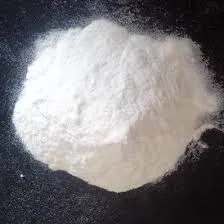
Gus . 14, 2024 15:29 Back to list
Exploring the Applications and Benefits of Hydroxypropyl Methyl Cellulose in Industrial Uses
Hydroxypropyl Methyl Cellulose (HPMC) A Versatile Polymer in Chinese Industry
Hydroxypropyl Methyl Cellulose (HPMC) is a non-ionic cellulose ether, widely recognized for its multifunctionality and broad applications across various industries. In recent years, China's industrial landscape has increasingly embraced HPMC due to its unique properties, making it an essential component in fields such as construction, pharmaceuticals, food, and personal care products.
HPMC is synthesized by modifying cellulose, a natural polymer derived from wood pulp or cotton. The modification process involves the introduction of hydroxypropyl and methyl groups into the cellulose backbone, enhancing its solubility in water and improving its thermal stability. This makes HPMC an excellent thickening agent, binder, and film-forming agent, which is why it finds extensive use in multiple applications.
Hydroxypropyl Methyl Cellulose (HPMC) A Versatile Polymer in Chinese Industry
In the pharmaceutical field, HPMC serves as an essential excipient. Its role in drug formulation cannot be overstated, as it acts as a binding agent and controlled-release matrix. The utilization of HPMC enables the manufacture of sustained-release tablets, allowing for a gradual release of active pharmaceutical ingredients (APIs) into the bloodstream. Such formulations improve patient compliance by minimizing dosing frequency and optimizing therapeutic effectiveness. Furthermore, due to its non-toxic and biodegradable nature, HPMC is favored in the development of drug delivery systems that prioritize safety and environmental considerations.
china hpmc-hydroxypropyl methyl cellulose

The food industry also benefits significantly from the properties of HPMC. It serves as a stabilizer, emulsifier, and thickener in various food products, enhancing texture and shelf life. For instance, in gluten-free products, HPMC helps improve the dough's structure and moisture retention, which can be challenging in gluten-free baking. As health consciousness rises among consumers, the demand for clean-label ingredients like HPMC—that do not compromise on quality or safety—has surged, making it a preferred choice for many food manufacturers in China.
In the personal care sector, HPMC's ability to form films and retain moisture makes it a popular ingredient in cosmetics, lotions, and shampoos. It provides desirable sensory attributes and stability to formulations, contributing to a superior user experience. The growing emphasis on natural and sustainable ingredients in beauty products aligns well with HPMC's properties, driving further exploration in this market.
Despite its numerous advantages, the production of HPMC presents challenges, particularly concerning its environmental impact. However, ongoing research in China aims to enhance the sustainability of HPMC manufacturing processes, focusing on reducing energy consumption and utilizing renewable sources.
In conclusion, Hydroxypropyl Methyl Cellulose has established itself as a vital polymer in various industries within China. Its versatility and effectiveness in construction, pharmaceuticals, food, and personal care underscore its importance in modern applications. As industries continue to innovate and prioritize sustainability, the role of HPMC is likely to expand even further, reaffirming its place as a cornerstone in the realm of advanced materials. The future of HPMC in China looks promising, driven by a commitment to quality, safety, and environmental consciousness.
-
Versatile Hpmc Uses in Different Industries
NewsJun.19,2025
-
Redispersible Powder's Role in Enhancing Durability of Construction Products
NewsJun.19,2025
-
Hydroxyethyl Cellulose Applications Driving Green Industrial Processes
NewsJun.19,2025
-
Exploring Different Redispersible Polymer Powder
NewsJun.19,2025
-
Choosing the Right Mortar Bonding Agent
NewsJun.19,2025
-
Applications and Significance of China Hpmc in Modern Industries
NewsJun.19,2025







